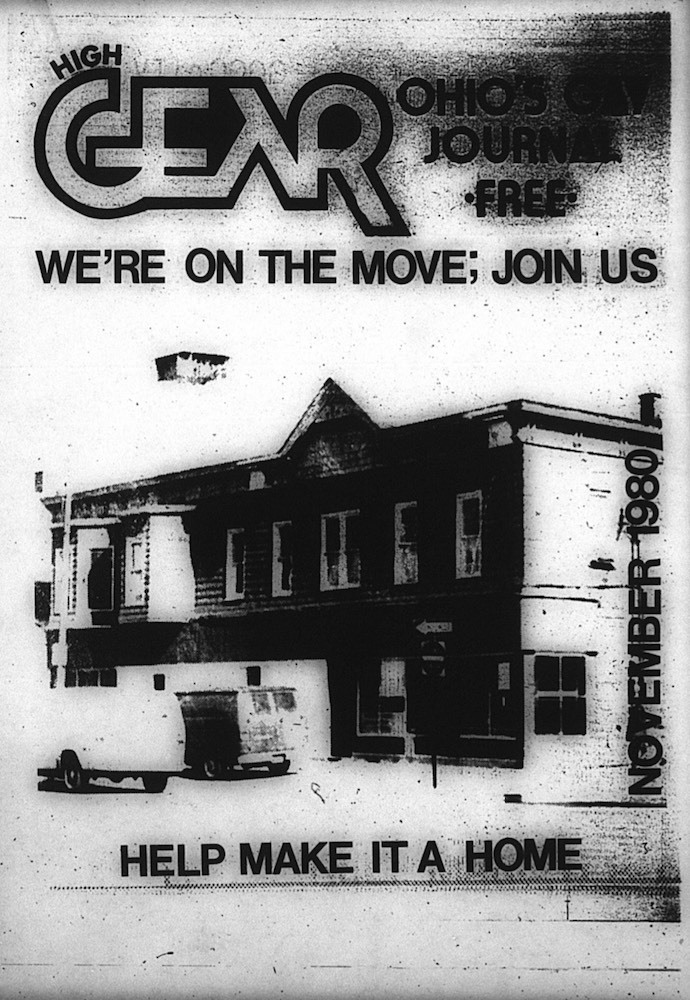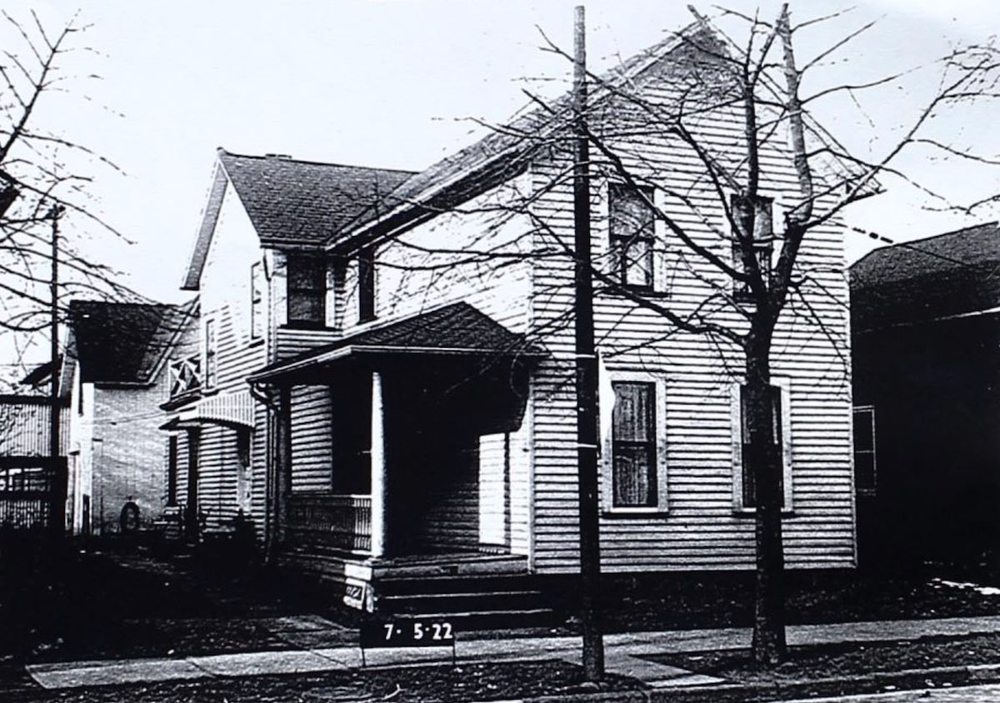GEAR Foundation
For the Benefit of Cleveland's Gay and Lesbian Community

In the summer of 1975, Art MacDonald was 25. He had been kicked out of the Navy a few years before for his orientation. He had since partnered, and founded and continued to lead a Metropolitan Community Church (MCC) congregation in spite of death threats aimed at him, serious harassment and assaults on his congregation, and his lack of theological education. He had also founded High Gear the year before and continued to write for it, and he co-founded the Gay Educational and Awareness Resources (GEAR) Foundation earlier that year and continued to lead it.
GEAR intended to provide activities and services in hopes of uniting the lesbian and gay community. One of GEAR’s main purposes was furnishing information, through High Gear and a hotline, and another was providing social space, through the Gay Community Center. High Gear covered a wide variety of topics but mainly focused on political news affecting the gay and lesbian community and on lesbian and gay events in northeast Ohio. The hotline was staffed by volunteers and answered evening and weekend calls. Some callers were simply going out of their way to harass the community, but the majority of calls were actually from gay and lesbian people with a variety of concerns: those considering suicide, individuals looking for nonjudgmental healthcare for STIs, folks wanting information about the bars and baths, and people who were just coming out. GEAR was concerned about gay and lesbian youth, but ambivalent or uncertain about how to interact with them or allow them space without reinforcing negative public perceptions of lesbian and gay people. In the early 1980s, the organization focused on helping youth through the hotline.
GEAR’s founders and board members were against gender and racial discrimination, at least in principle, but active inclusion was more difficult to achieve. The composition of GEAR’s board of trustees shifted from all men to nearly half women and back again from the late 1970s to the mid-1980s, while that of the foundation membership remained fairly steady at approximately one-third women. Bisexuals, transgender people, crossdressers, and people involved in the drag scene were seen as less a part of the community, and very few of these individuals were involved with GEAR. Participation by straight allies was also uncommon in the 1970s and 1980s, with most of the few around being parents in Parents of Gays (now PFLAG). GEAR did host groups for black and Asian gay men, but participation of people of color in GEAR was limited.
With the discriminatory social climate and limited financial resources, GEAR was frequently looking for suitable space to host Cleveland’s lesbian and gay community. Before opening the Gay Community Center, GEAR initially met at MacDonald’s home, but he moved to Chicago early in 1976 to attend seminary. Starting around November 1975, GEAR had its office and the hotline at 2999 W. 25th Street, in a shared space with the offices of the Cleveland Gay Federation and the Cleveland MCC congregation. On March 27, 1977, the Gay Community Center had its first open house in GEAR’s new location, a few rooms in the CoventrYard building, a mini-mall at the corner of Euclid Heights Boulevard and Coventry Road in Cleveland Heights. Eleven months later, CoventrYard was destroyed in a fire. GEAR moved into a basement room at New Dimensions, a club downtown at 1012 Sumner Court, across from Erie Street Cemetery. The room was cold and small, holding only fifteen to thirty people at most, and quite loud when the club was operating. GEAR began to look for another location but didn’t find a suitable place until 1980.
In February 1980, GEAR’s board made its initial decision to buy the former Bernard Furniture Building on the northeast corner of West 14th Street and Auburn Avenue in Tremont. The wooden building was approximately 80 years old and needed substantial work, but GEAR’s trustees assumed they could gain enough rental income from the upper floor to make the finances work, and moved forward with the purchase. After GEAR made the down payment early in March, a few neighborhood organizations got wind of the planned move and disapproved of it. GEAR became concerned over safety and attempted to back out of buying the building, but the organization couldn’t find a way to without losing its down payment. The board initially planned to resell, but renovations progressed slowly, and with no immediate incident of significant prejudice GEAR moved in to save money. However, the problems of owning a building – particularly issues with tenants and the physical state of the Bernard building – quickly exacerbated GEAR’s money woes. By September 1982, the building had failed a city inspection, almost all its utilities were past due, and some had been disconnected. The next month, all the trustees resigned and the mortgage was foreclosed. A meeting of the foundation membership was held in November, electing new trustees who began to turn the situation around, and GEAR continued to use the Bernard building into the fall of 1983 before moving to a board member’s home at 2100 Fulton Road by December 1983.
The Gay Community Center continued despite GEAR’s decline, and became the stable foundation of Cleveland’s LGBT community over the next thirty years. It moved only three additional times over that period, and with a few name changes continues to exist as the LGBT Center of Greater Cleveland.
Images





